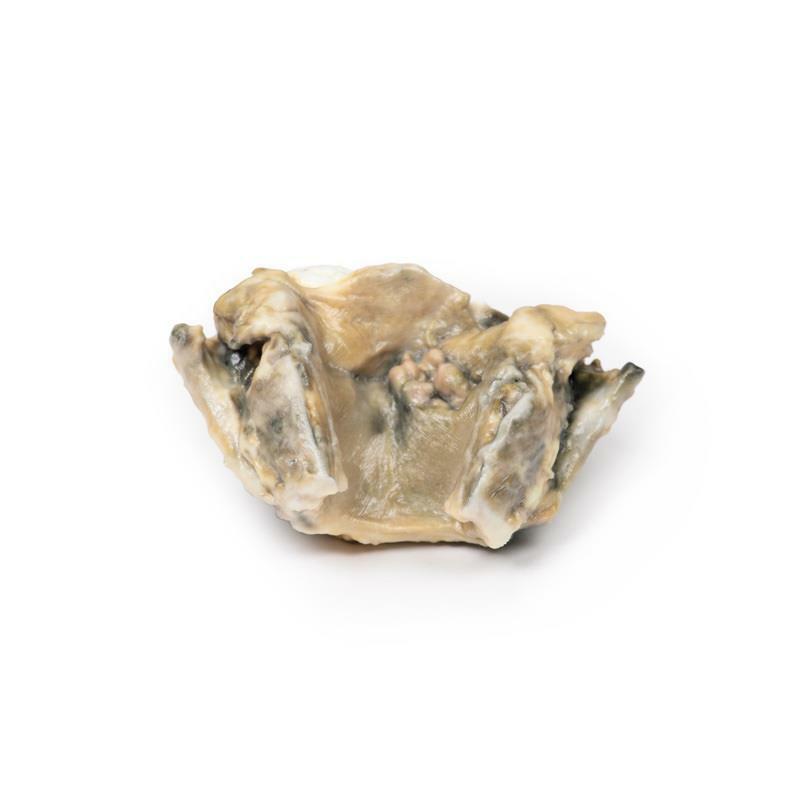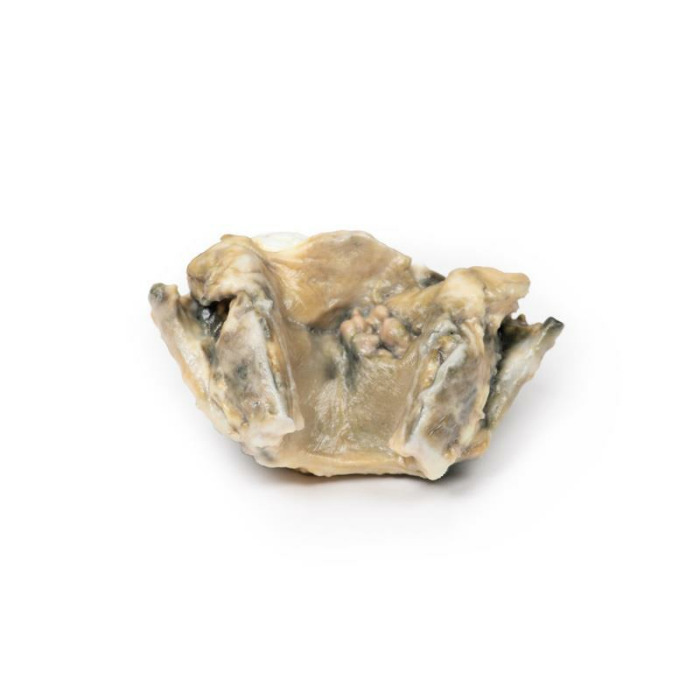MP2052 - Carcinoma of larynx
By buying you get
114 Points
More than a purchase. You get service and expert advice. Ask which products and combinations are recommended for you.
Clinical History
A 47-year-old male presents with a 13-month history of dysphonia and odynophagia at the level of his thyroid cartilage. He has a significant smoking history. Investigations revealed a laryngeal tumour. He received radiotherapy to the tumour followed by a laryngectomy. Six months later pulmonary metastases were discovered, and he subsequently died.
Pathology
This is the patient’s laryngectomy specimen. The larynx has been sliced open and is viewed from the posterior aspect. There is significant right vocal cord distortion by an irregular ulcerating tumour. Mucosal congestion is also noted. Histologically this was a well differentiated squamous cell carcinoma (SCC).
Further Information
Over 95% of laryngeal cancers are SCC. The tumour usually develops on the vocal cords but may occur above or below the cords, on the epiglottis, aryepiglottic folds or in the pyriform sinuses. The cancer usually begins as carcinoma in situ, progressing to ulcerated and fungating carcinoma with continued exposure to carcinogens. The greatest risk factors for developing cancer of the larynx are tobacco smoke and alcohol consumption. Human Papilloma Virus (HPV) infection, asbestos exposure and irradiation have also shown increased incidence. Males are affected more than females. It most frequently presents in the 6th decade of life.
Laryngeal cancer may spread by invading into surrounding structures, via lymphatics usually to local cervical nodes or haematogenous metastasis most commonly to the lungs. Common symptoms on presentation include dysphonia, dysphagia, odynophagia, globus and cough. Less commonly haemoptysis, stridor, dyspnoea and halitosis may be described. Treatment varies on the stage of the disease. Smoking and alcohol cessation are important for all disease stages. In early disease laryngeal preservation treatments may include laser therapy, microsurgery and radiotherapy. Later stage disease treatments may involve a combination of laryngectomy, radiotherapy and chemotherapy.
- Quantitative unit
- ks

MP2052 - Carcinoma of larynx









